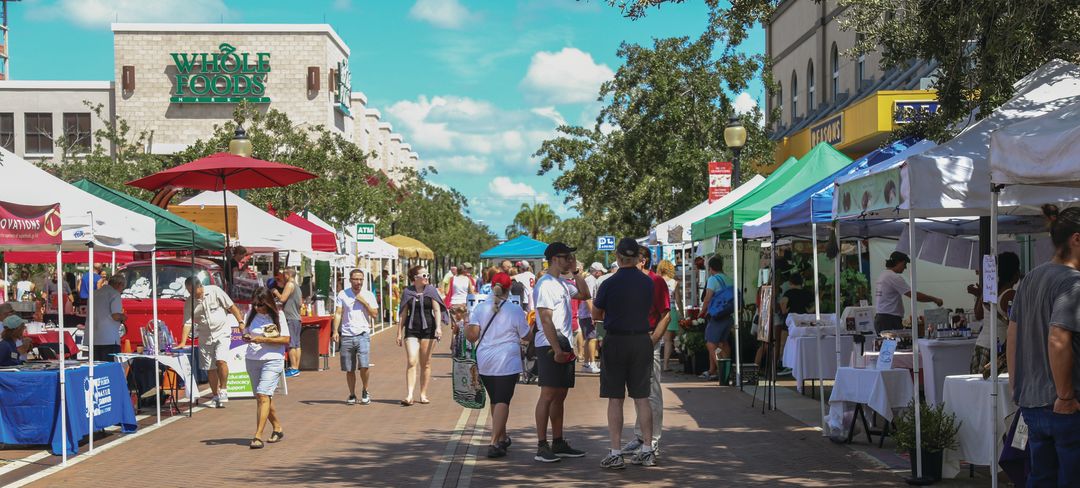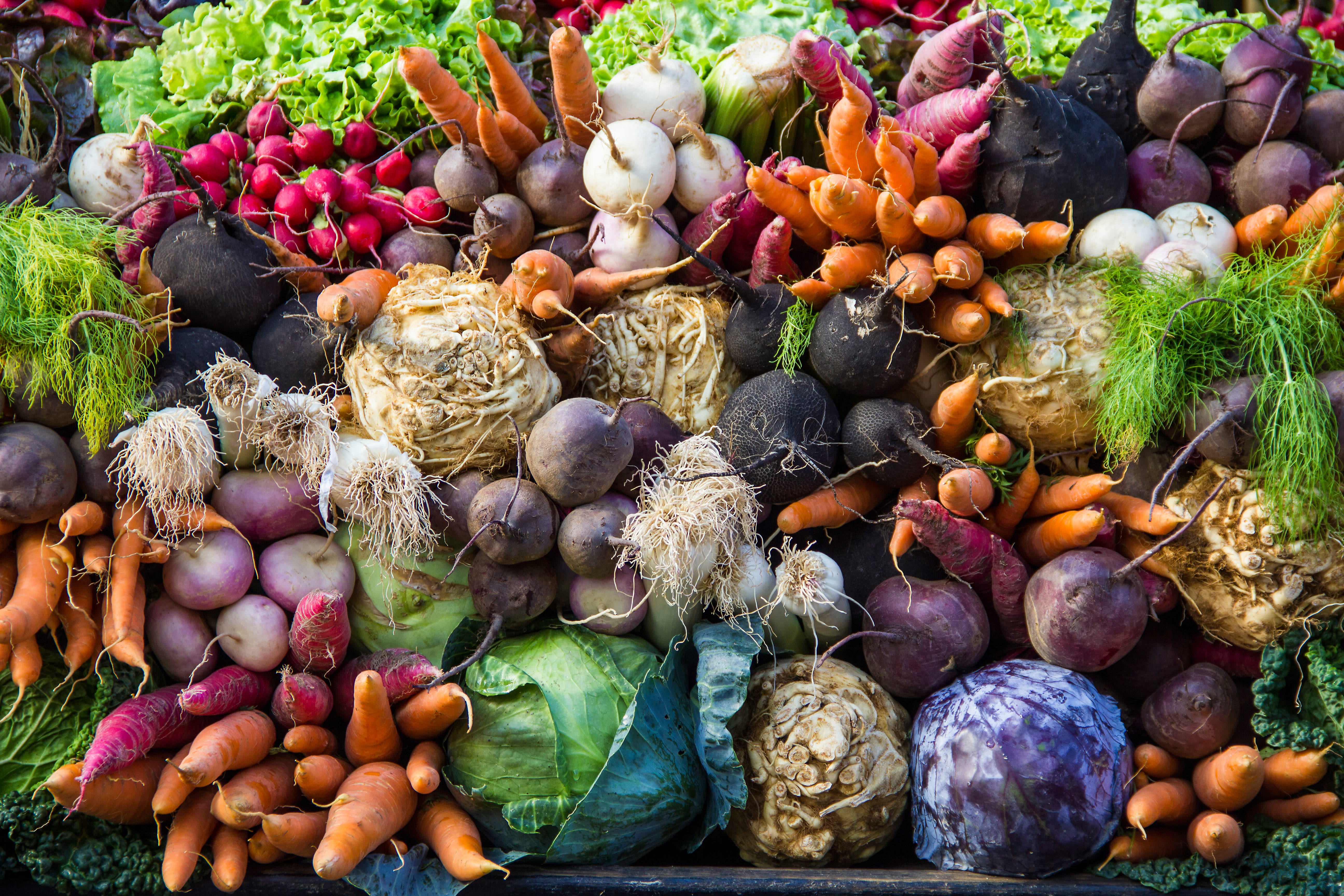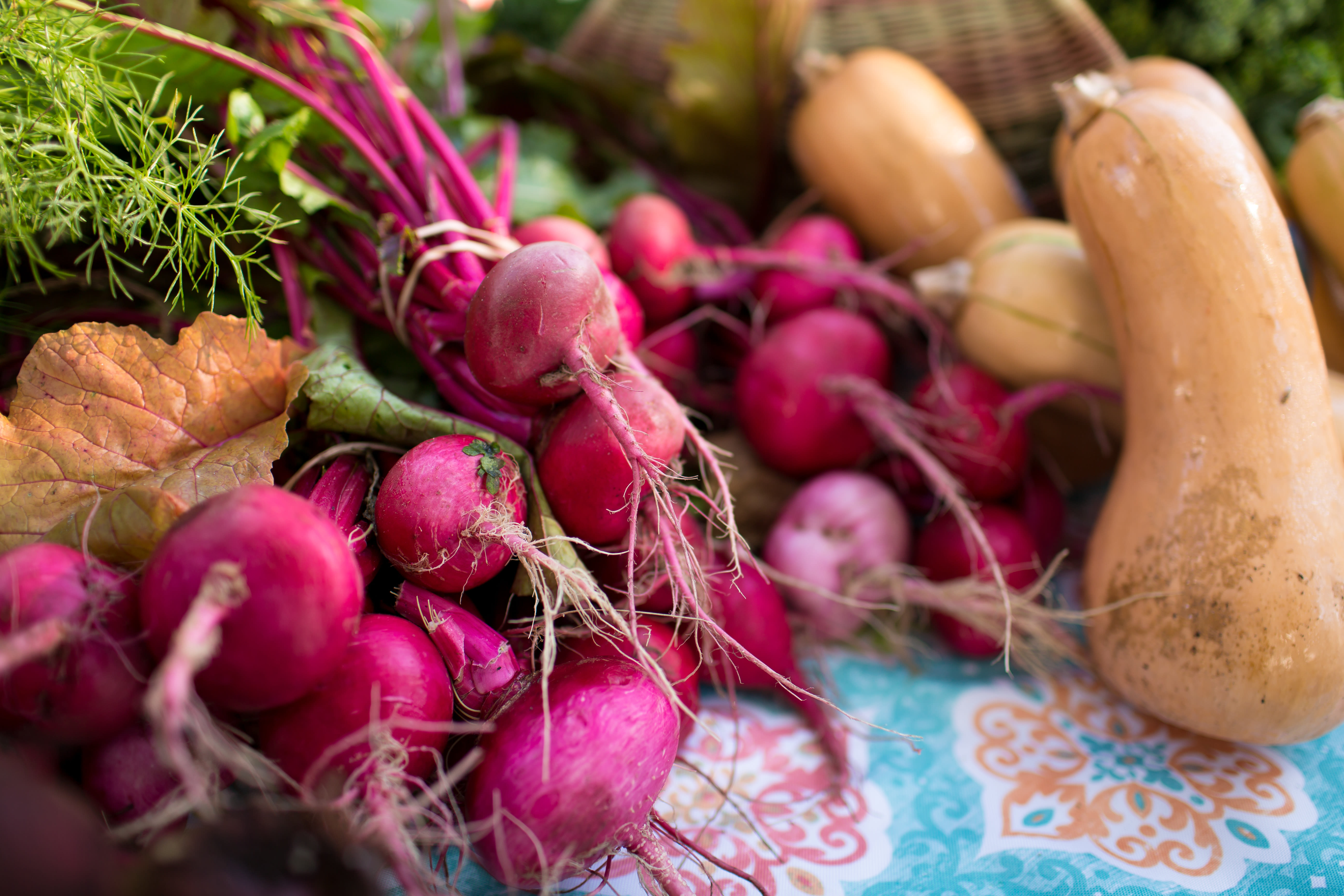Why Aren't There More Local Farmers at the Downtown Market?

Image: Christopher Austin
Strolling from First Avenue to State Street on a Saturday morning, I pass stalls stocked with fruits, vegetables and seafood, booths selling grilled sausages and empanadas, tables laden with cookies, breads and olive oils. What I don’t see: many farmers. The Sarasota Farmers Market website lists over 50 vendors; only a handful grow and sell their own food.
Many customers assume the produce they’re buying is grown and sold by local farmers, but in fact, both Kinsey’s Produce and Brown’s Grove, two of the market’s three largest produce anchors, are primarily resellers, which means they are buying the same kind of shipped-in produce you can find at Publix. Worden Farm, an organic farm in Punta Gorda, is the third big produce seller. It grows and sells its own goods, as does Peter Burkard, who produces eggs and some produce at his Sarasota home farm. David’s Aquaponic grows lettuces in Palmetto. Aside from them, it’s slim pickings for local produce.
It’s not because more local farmers don’t want to be there. Geraldson Community Farm, a nonprofit organic grower located in northwest Bradenton, applied to join the market three years ago and was rebuffed. The reason is simple, says Geraldson operations manager Christa Leonard: “Certain farmers do not want competition.” She claims that Worden Farm campaigned to block them when they applied.
Other growers, who declined to speak on the record, echo Leonard’s complaint about Worden Farm.
Eva Worden, who runs Worden Farm with her husband, Chris, directed questions about specific vendor applications to market manager Phil Pagano. But she says markets shouldn’t accept too many vendors selling similar items. “There are only so many customers,” she says, “and if the pie gets divided, especially in identical product categories, then it can lead to problems of sustainability for the vendors.”
Worden usually has vegetables left over after the market closes, she says, and that means demand for organic produce isn’t great enough to justify another farm coming onboard. And she points out that some products, like bananas and pineapple, aren’t available locally. If other stands are reselling them, they’re not “displacing” local farmers, Worden says. “If we could grow those things we would.”
I’m not suggesting that Worden should lose its hard-earned customer base. But I’ve visited markets in places like Seattle or Iowa City, and nearly every stall is filled with local produce. It galls me that there are so few farmers at what is supposed to be a farmers market. Why couldn’t Geraldson replace a reseller?
Pagano says the market has come a long way in the amount of local produce that’s available. “Seven or eight years ago, I’d say there was a problem,” he says. He’s not against competition, but vendors who have supported the market for years deserve to make money. He tells growers who can’t make it into the downtown market to build up foot traffic at other markets, like Wednesday’s Phillippi Farmhouse Market, Saturday’s Central Sarasota Farmers Market or the Bradenton Farmers Market, also open on Saturdays.
Many are doing just that. Geraldson now sells at the Phillippi market, the Bradenton market and a twice-monthly market in Wesley Chapel. Aloe Organics, an Arcadia farm, sells at the Phillippi market and at a Punta Gorda market. Aloe’s application to join the downtown market was denied this year because of a lack of space.
These days, “There are more farmers markets than there are farmers,” Worden notes.



